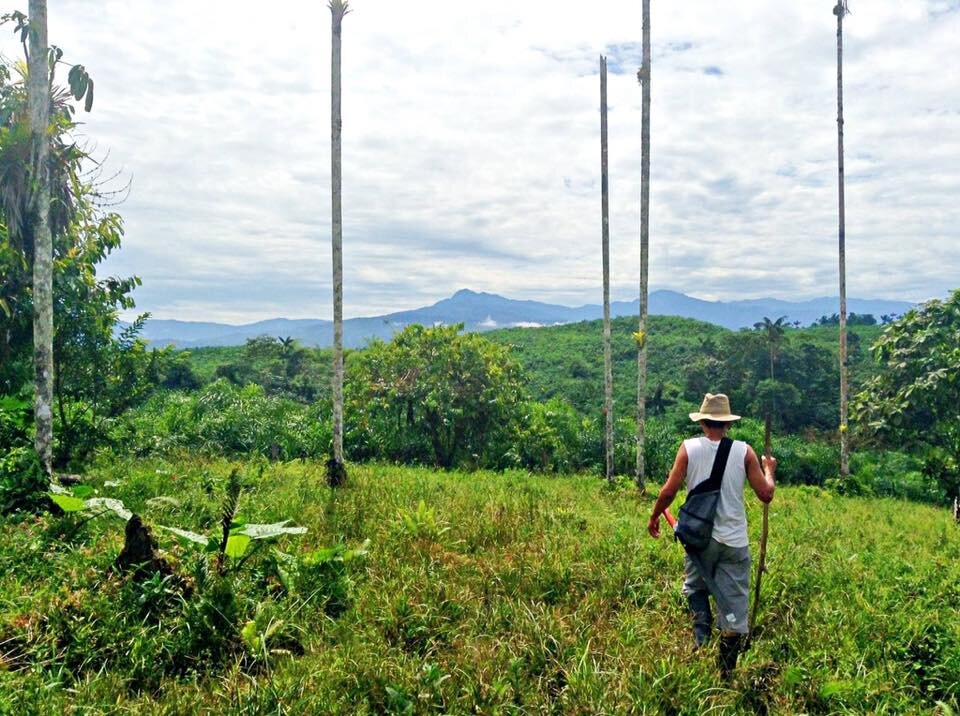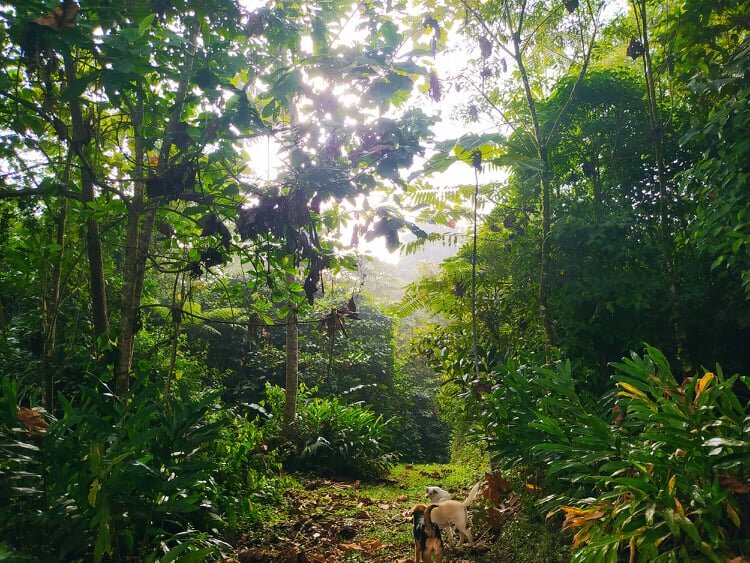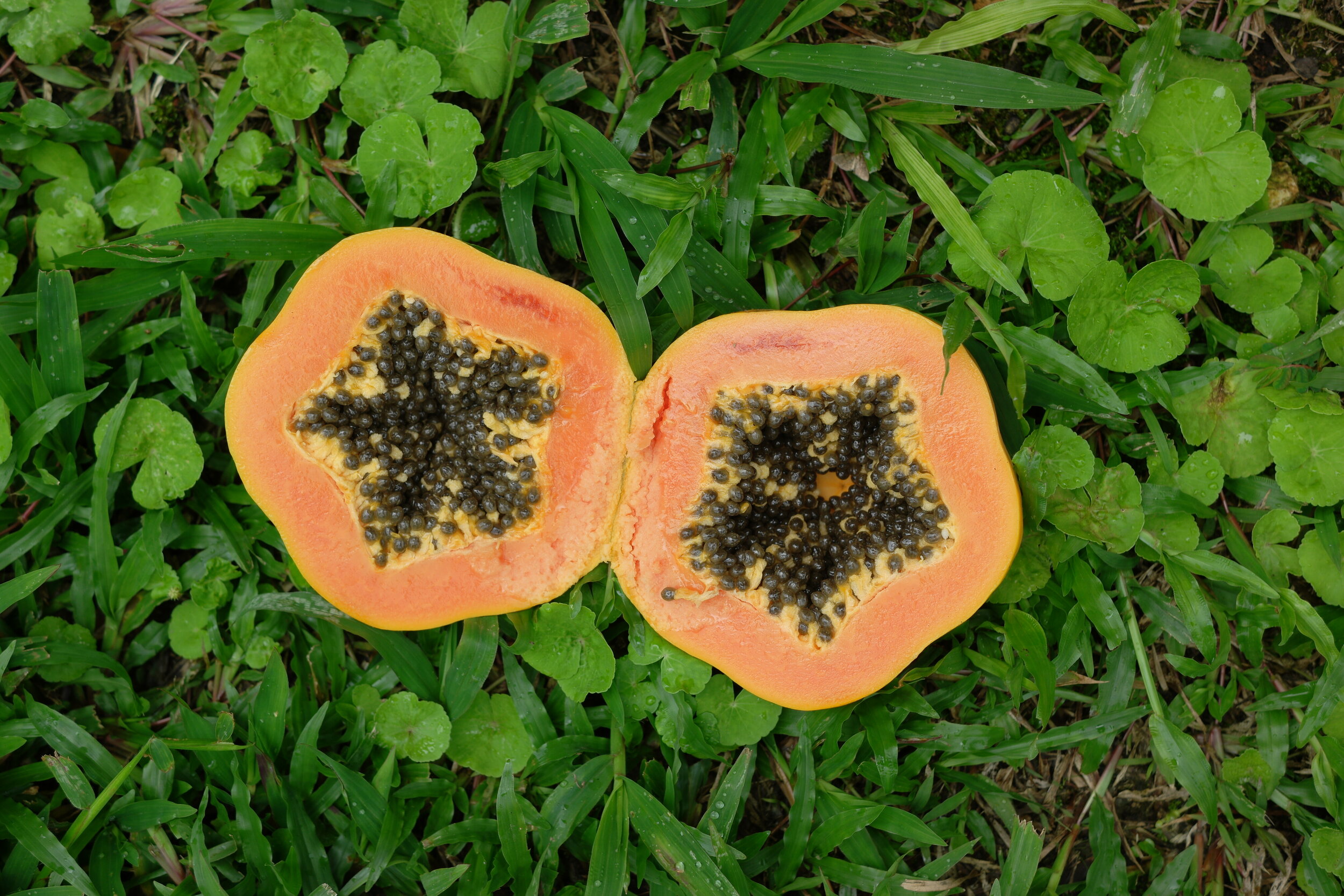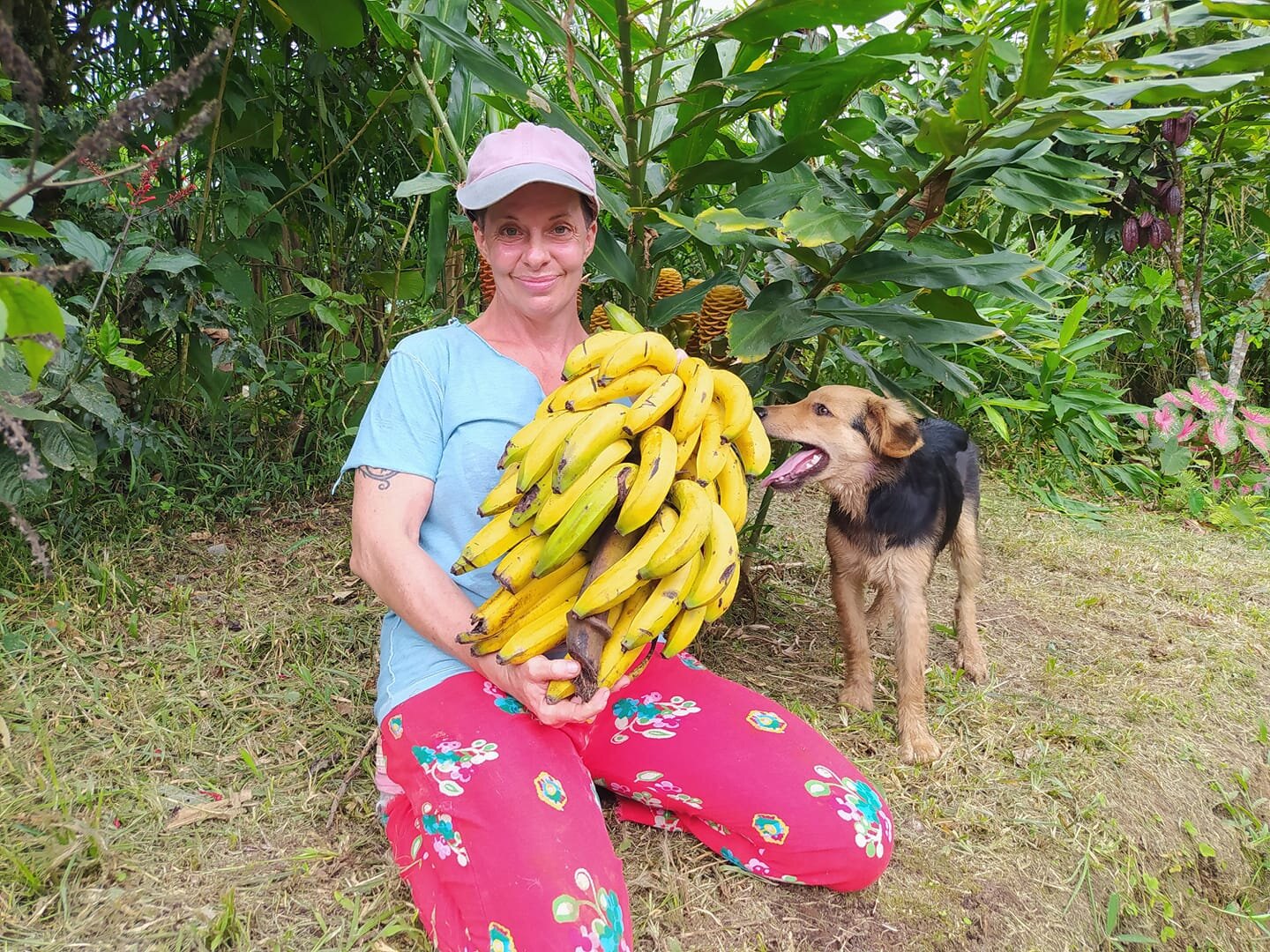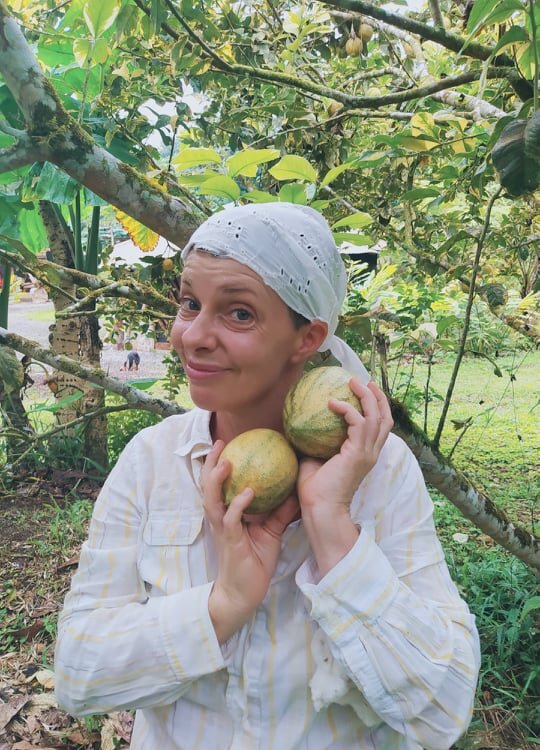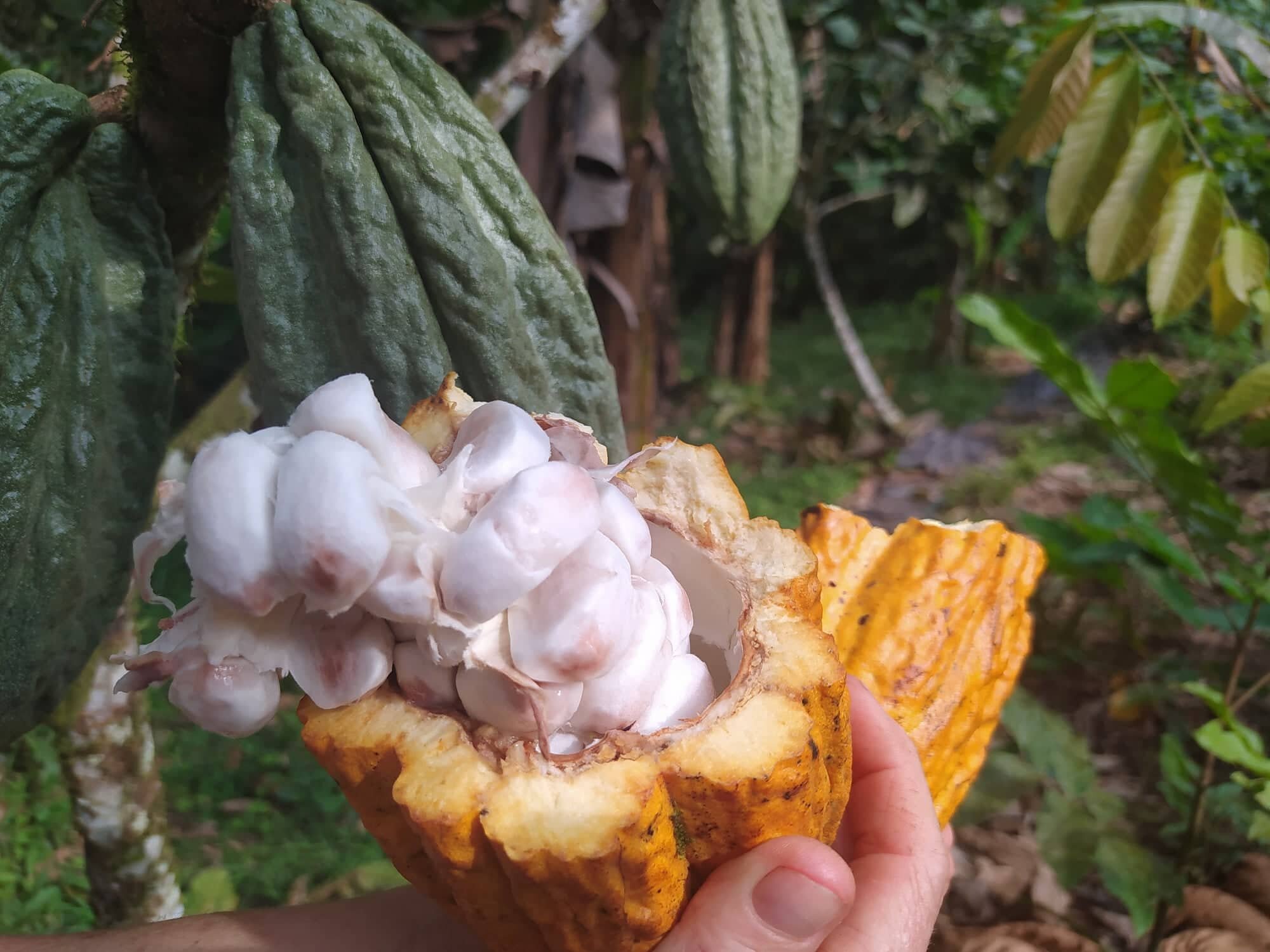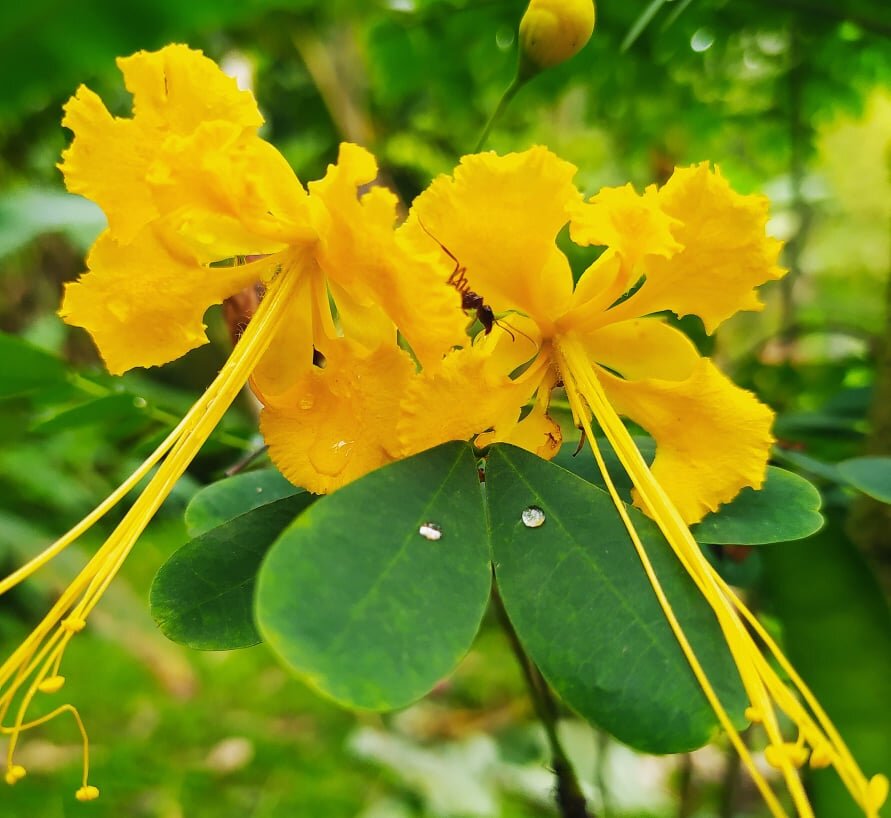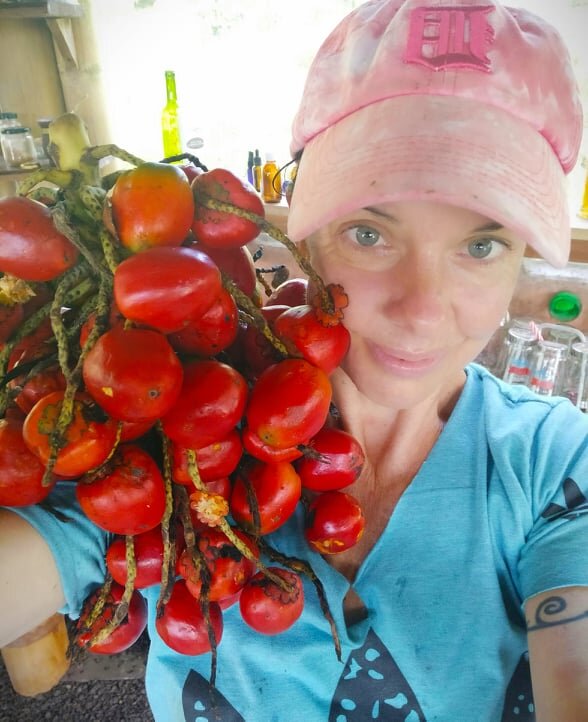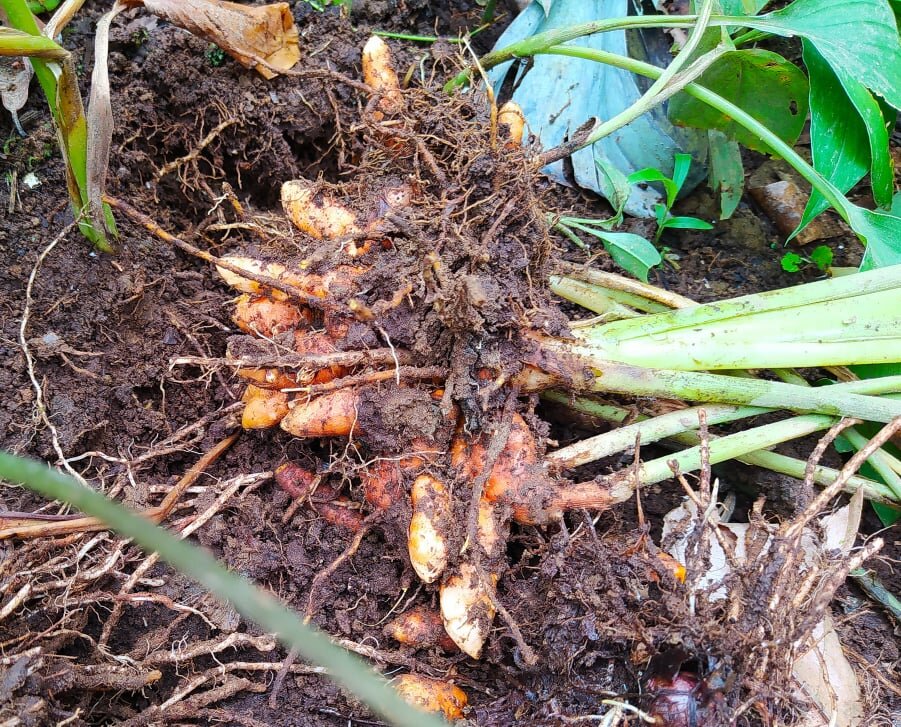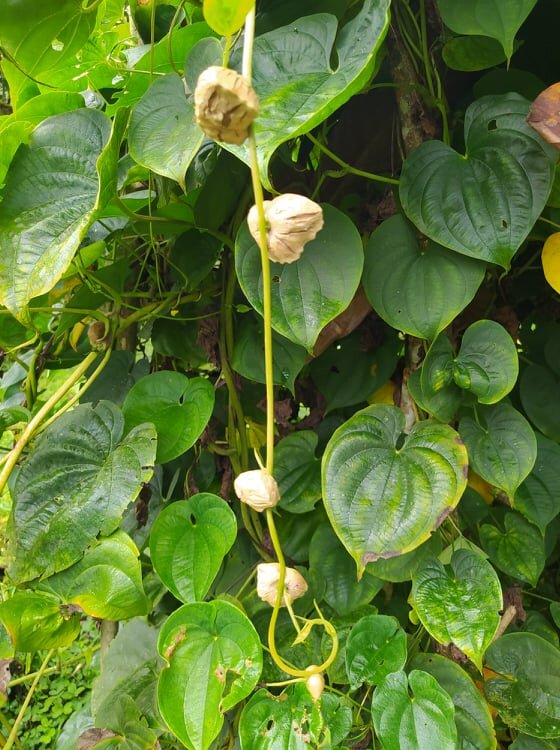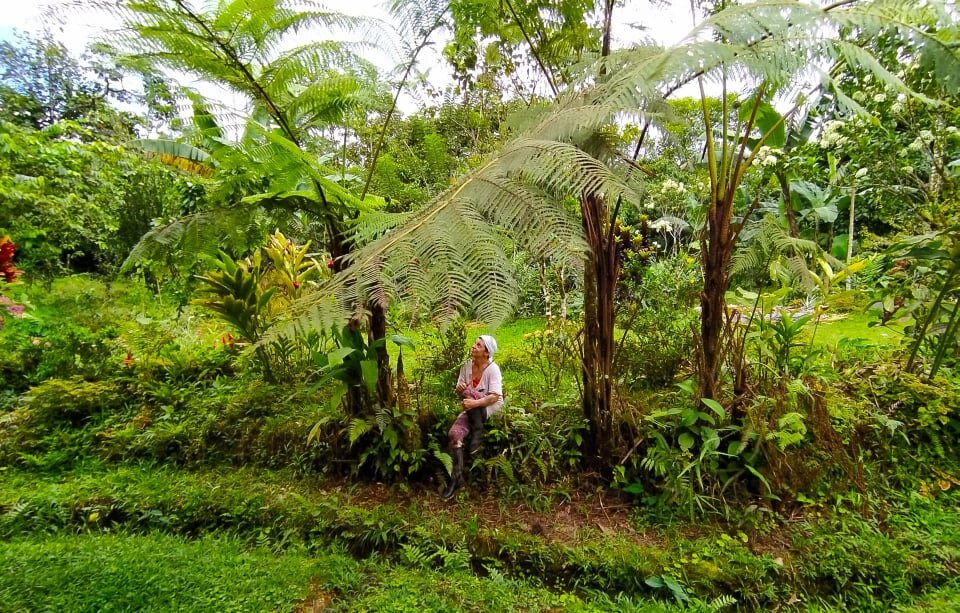What’s in Your Food Forest?
More and more people have been writing to me to ask, So what’s in your food forest? Many of these folks are expats like me, northerners in the tropics of the global south who want to do right by the land and grow some good things to eat. In response, I’ve put together this list of many of the trees, vines, shrubs, and roots we have planted since arriving on our land six years ago. It is not meant to be a comprehensive tally of everything you can grow in a humid forest environment, but it’s certainly a fair sample and can get anyone from Columbia to Zimbabwe to Indonesia off to a very good start.
Here’s some snapshots of our land, in 2016 and today.
Pioneers:
fast growing, create shade, biomass, some provide food, begin building microbial health and soil aggregates, increase nutrient cycling
No matter what you want to plant in your food forest, it is absoluitely essential—especially if your land was deforested or degraded by industrial farming—to start with pioneers. Pioneers forge the way and make it easier for all of your wonderful fruits, nuts, herbs and spices to thrive.
+Plantain Musa paradisciaca
Banana Musa
Balsa Ochroma pyramidale (soft light wood)
Teca/Teak Tectona grandis (excellent timber for carving)
+Cassava/manioc/yuca Manihot esculenta (large starchy tuber)
+Papachina/Taro Colocasia esculenta (potato-like tuber)
+Camote/Sweet potato Ipomoea batatas
Pineapple Ananas comosus
*Papaya Carica papaya
Madre de cacao/Mata Ratón Glircidia sepium (nitrogen-fixing)
Watch this video to see exactly how pioneers work to get an Agroforestry system started on the right foot.
Target Trees and Plants
Once pioneers are established (after at least 1 year) the following layers can be planted--
Shrub and Short Tree Layer:
protects topsoil, holds moisture, shelters beneficial animals, e.g. hummers and small birds, lizards
*Naranjilla/ Lulo Solanum quitoesne (small tart orange fruit)
~Lemon verbena Aloysia citrodora (fragrant leaf, pepper-like seed)
~Hierba luisa/lemongrass Cymbopogon ciratus
Arazá Eugenia stipitata (tart juicy soft yellow fruit)
Coffee Coffea L.
*Guaybilla/sundrop Eugenia victoriana (tangy aromatic orange flavored fruit)
Calomondin Calamansi (cross of tangerine and kumquat)
~Albahaca tropical/Tropical basil Ocimum basilicum (similar to Thai basil)
~Jamaican peppermint /Tropical mint Micromeria viminea
~Allspice Pimienta dioica (medicinal antiseptic clove flavored leaves)
*Katuk Sauropus (edible green leaves high in minerals)
Middle Canopy Tree Layer:
includes target fruit crops, provides shade and woody biomass when pruned, shelters more variety of birds
Limón/Lime, lemon varieties Citrus limon
Naranja/Orange Citrus sinensis
Mandarina/Tangerine Citrus reticulata
*Jabicutaba Plinia cauliflora (tart cherry fruit)
+*Aguacate/Avocado* Persea americana
Mango* Mangifera indica
Marañon /cashew Anacardium occidentale
*Cacao Theobroma edible seed, basis of chocolate, protein, fiber, magnesium, iron, copper, selenium, manganese, antioxidants, serotonin-boosters
Salak/Snakefruit Salacca zalacca
*Borojó Alibertia patinoi (unique iron-rich pulpy fruit, tastes like tamarind)
Chicle Manicara zapota
Mangosteen Garcinia mangostana
Guava Psidium guajava
Guaba//Ice Cream Bean Inga
+*Fruitpan/Breadnut Brosimum alicastum (delicious high protein edible seeds, different from breadfruit)
*Moringa Moringa oleifera
~Nuez Moscada/ Nutmeg Myristica fragrans
~Ishpingo/ishpinku Ocotea quixos (medicinal flower calyx and cinnamon flavored leaves)
~Ceylon Cinnamon Cinnamomum verum
*Varieties highly dependent on altitude. Trees that produce fruit at high altitudes will not produce at lower and vice versa.
Tall Canopy Layer:
includes target fruit crops, provides dappled shade, leaf fall and woody biomass when pruned, shelters large birds, e.g. eagles, hawks, large toucans
Fruits:
Coconut Cocos nucifera
+*Chontaduro/peach palm Bactris Gasipaes, clusters of yellow to red fruit, squash like flavor, protein, Omega 3, fiber, beta-carotene
*Guanabana/Soursop Annona muricata
Jackfruit Artocarpus heterophyllus
+Chempedek/Breadfruit Artocarpus integer
Rumbai Baccaurea motleyana (clusters of small white fruit that taste like white grapes)
Achotillo/Rambutan/Lychee Nephelium lappaceum
*Sapote Pouteria sapota(large fleshy orange fruit, tastes like a cross of cantalope and pumpkin)
Queen plum Reina claudia
*Bacao/Macambo Theobroma Bicolor
*Nuez Pili/Phillipine nut Canarium ovatum
Timber~High value hardwood
Laurel Laurus nobilis
Guayacan
Tangaré
Chuncho
Caoba
Aguacatillo
Cedro Cedrela odorata
Vine Layer: provides more variety of foods
Chayote Sechium edule, edible gourd, Vitamin C, B6, magnesium
Girón large oblong gourds, good cantalope flavor flesh
*Sacha inchi Plukenetia volubilis highly nutritious seeds, taste like filbert or almond, complete Omega profile, protein, fiber, Antioxidants
Air potato Dioscorea bulbifera
Malabar spinach Basella alba
After canopies and vines are established (3-4 years), shade-loving plants can be planted in well-mulched soil below:
Herbs and Spices: provide flavor, fragrance, attract pollinators and beneficial insects, often have high commerical value
~Curcuma/Turmeric Curcuma longa
~Jenjibre/Ginger Zingiber officinale
~Cardamomo/Cardamom Elettaria cardamomum
~Galangal Alpinia galanga
~Black pepper Piper nigrum
+calorie staple
*especially high in vitamins, minerals, antioxidants
~medicinal properties, anti-bacterial or anti-inflammatory
Related Article: Want to know more about how we got our food forest started, and how you can to? Read Rewild, Regenerate, or Reforest. A call to action.
_____________________________________________________________________________________________________________
At Sueño de Vida we work in a meaningful way to heal land ravaged by deforestation. How meaningful? According to a recent UN Foresight Brief on climate change,
--It is of the utmost importance to stop deforestation and to increase reforestation efforts around the world. Agricultural practices should focus on soil building, year-round soil cover with plants and the use of agroforestry methods.
That is exactly what we do here at SdV. You can help by helping us do what we do every day: plant forests that nurture soil, people, and community.
Click HERE to donate directly to our reforestation fund OR make a monthly pledge on our Patreon.
Thank you.
Kristen Krash is the director and co-founder of Sueño de Vida, a regenerative agroforestry farm, education center, nature reserve in Ecuador’s Chocó Andino Cloudforest. Prior to moving, Kristen was known for her guerrilla gardens — productive green spaces she created in any available space. Now an urban transplant in the South American rain forest, she has adapted her urban gardening and sustainability skills to large-scale reforestation of degraded land. She takes a practical and accessible approach to helping others achieve more balance and self-sufficiency in their lives.
Kristen’s articles and interviews have been featured on popular sustainability platforms like Abundant Edge and The Mud Home, and in the Rainforest Regeneration Curriculum at the Ecological Restoration Camps.


